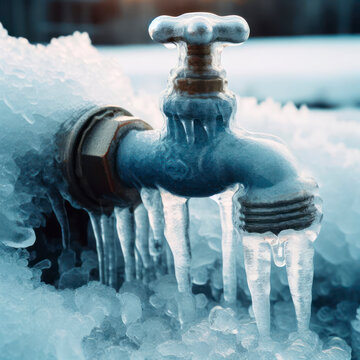How to Prevent Frozen Pipes in Cold Weather: Expert Advice
How to Prevent Frozen Pipes in Cold Weather: Expert Advice
Blog Article
What are your thoughts about Winter Plumbing Precautions: Preventing Frozen Pipes?

Winter can ruin your pipes, particularly by freezing pipelines. Below's just how to avoid it from taking place and what to do if it does.
Introduction
As temperatures decline, the threat of frozen pipes boosts, possibly bring about pricey fixings and water damages. Recognizing just how to stop icy pipelines is essential for homeowners in cold environments.
Comprehending Frozen Pipelines
What creates pipes to ice up?
Pipes ice up when subjected to temperature levels below 32 ° F (0 ° C) for expanded periods. As water inside the pipes freezes, it expands, putting pressure on the pipeline walls and possibly creating them to break.
Dangers and damages
Icy pipes can result in supply of water disturbances, residential property damage, and pricey fixings. Burst pipelines can flooding homes and cause substantial architectural damages.
Signs of Frozen Pipeline
Determining icy pipes early can stop them from breaking.
Just how to determine frozen pipes
Look for lowered water circulation from taps, unusual smells or noises from pipelines, and noticeable frost on exposed pipelines.
Prevention Tips
Protecting susceptible pipelines
Wrap pipes in insulation sleeves or use warm tape to secure them from freezing temperatures. Concentrate on pipelines in unheated or exterior areas of the home.
Home heating methods
Maintain indoor spaces sufficiently warmed, particularly locations with pipes. Open closet doors to enable warm air to flow around pipelines under sinks.
Securing Exterior Plumbing
Yard hose pipes and outdoor faucets
Detach and drain garden tubes prior to wintertime. Set up frost-proof spigots or cover outdoor taps with insulated caps.
What to Do If Your Pipelines Freeze
Immediate activities to take
If you think icy pipes, keep faucets open to ease stress as the ice melts. Make use of a hairdryer or towels taken in warm water to thaw pipelines slowly.
Long-Term Solutions
Architectural changes
Take into consideration rerouting pipes far from exterior walls or unheated areas. Add extra insulation to attics, basements, and crawl spaces.
Upgrading insulation
Buy top quality insulation for pipelines, attic rooms, and walls. Proper insulation assists preserve regular temperature levels and minimizes the threat of icy pipes.
Conclusion
Avoiding frozen pipelines requires positive measures and fast actions. By comprehending the causes, signs, and preventive measures, home owners can safeguard their plumbing throughout cold weather.
6 Proven Ways to Prevent Frozen Pipes and Protect Your Home
Disconnect and Drain Garden Hoses
Before winter arrives, start by disconnecting your garden hoses and draining any remaining water. Close the shut-off valves that supply outdoor hose bibs and leave the outdoor faucet open to allow any residual water to drain. For extra protection, consider using faucet covers throughout the colder months. It’s also important to drain water from any sprinkler supply lines following the manufacturer’s directions.
Insulate Exposed Pipes
Insulating your pipes is an effective way to prevent freezing. Pipe insulation is readily available at home improvement stores and is relatively inexpensive. Pay close attention to pipes in unheated areas such as the attic, basement, crawl spaces, or garage. Apply foam insulation generously to create a buffer against the cold. You can also wrap your pipes in heat tape or thermostat-controlled heat cables for added warmth.
Seal Air Leaks
Inspect your home for any cracks or openings that could let in cold air. Seal any holes around the piping in interior or exterior walls, as well as the sill plates where your home rests on its foundation. Additionally, make sure to keep your garage door closed unless you’re entering or exiting. Leaving it open creates a significant air leak that can lead to frozen pipes.
Allow Warm Air Circulation
During cold snaps, it’s essential to allow warm air to circulate evenly throughout your home. Leave interior doors ajar to promote better airflow. Open kitchen and bathroom cabinets to help distribute heat consistently around the rooms. If you have small children or pets, be sure to remove any household chemicals or potentially harmful cleaners from open cabinets for safety.
Let Faucets Drip
A small trickle of water can make a big difference in preventing ice formation inside your pipes. When temperatures drop significantly, start a drip of water from all faucets served by exposed pipes. This continuous flow helps prevent the water from freezing. Additionally, running a few faucets slightly can relieve pressure inside the pipes, reducing the chances of a rupture if the water inside does freeze.
https://choateshvac.com/6-proven-ways-to-prevent-frozen-pipes-and-protect-your-home/

Do you like more info about How To Avoid Freezing Pipes? Create a remark directly below. We'd be happy to see your opinions about this blog entry. We are looking forward to see you back again soon. If you appreciated our post kindly don't forget to pass it around. Many thanks for going through it.
Visit The Following Page Report this page